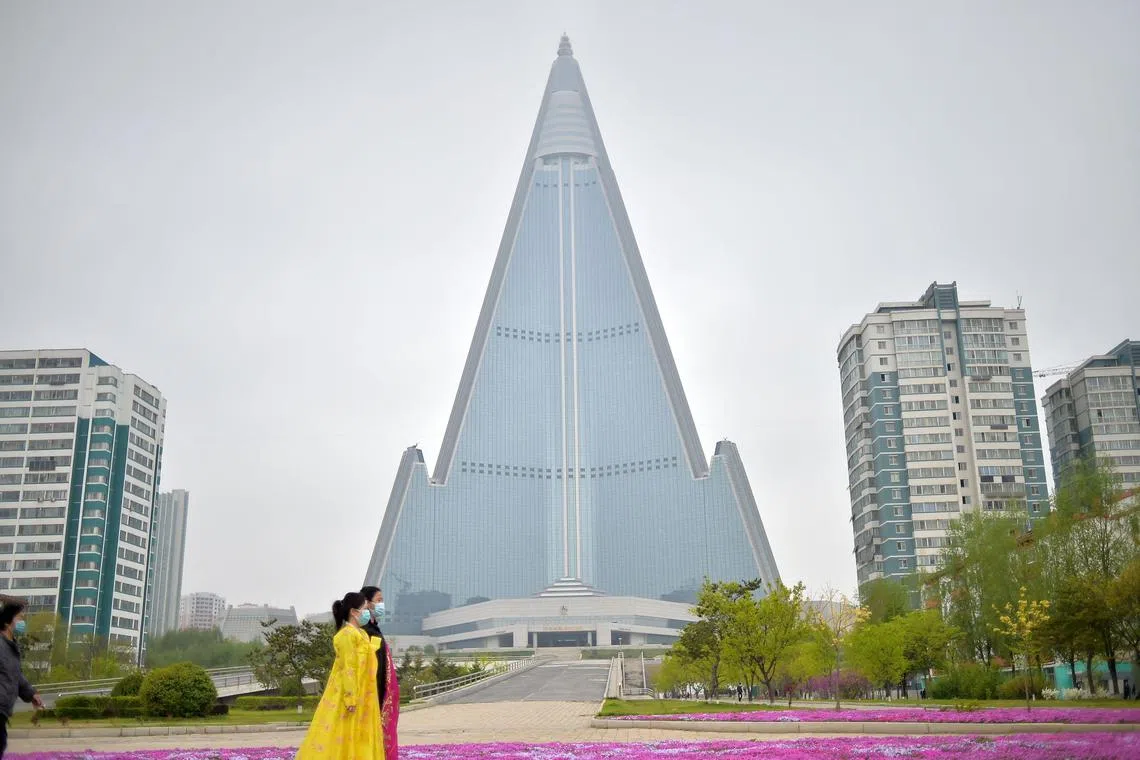Falling birth rates a concern across both Koreas, but reasons differ for the North
Sign up now: Get insights on Asia's fast-moving developments

SPH-ID : 52823246 Low births mean a shrinking workforce, which could take a toll on the country’s labour-intensive industries.
PHOTO: AFP
Follow topic:
SEOUL – Similar to South Korea, North Korea is grappling with tumbling childbirth rates. But the cause is starkly different: famine and persistent economic hardship.
The communist state’s total fertility rate, the average number of children a woman bears in her lifetime, stood at 1.9 in 2022, according to a report titled State Of World Population 2022, published by the United Nations Population Fund.
The figure was higher than the South’s 0.78 estimated in the same year. But it is still below the replacement level of 2.1, which would keep its population stable at just under 26 million, the report said.
North Korea saw a gradual fall in births after a catastrophic famine in the mid- and late 1990s, during which about two million people reportedly died from hunger.
Declining fertility rates led to an ageing population.
The number of North Koreans aged 65 and older accounted for 9.75 per cent in 2022, up 0.1 percentage point from a year earlier, US Central Intelligence Agency data showed. This makes North Korea an “ageing society” where the share of the population aged over 65 is above 7 per cent.
Low births and a fast-ageing population are a worry for the North’s regime, as a shrinking workforce could take a toll on the country’s labour-intensive industries.
According to DPRK Today, a propaganda website for the Democratic People’s Republic of Korea (the North’s official name), the country has introduced multiple policies to encourage more births, focused on cash grants and affirmative action.
It says mothers of three or more children are entitled to priority in receiving medical treatment at local hospitals, as well as government subsidies until their youngest child graduates from high school at the age of 17.
They are also allowed to “freely request” childcare leave if their children are aged 17 or under, according to the website.
North Korean watchers in the South tend to play down the effectiveness of pro-natal policies.
This is due to the country’s poor nurturing conditions that have worsened in recent years due to global sanctions for its nuclear and missile programmes, unfavourable weather and border lockdowns caused by the Covid-19 pandemic.
In 2022, North Korea produced an estimated 4.5 million tonnes of grain, a 3.8 per cent drop from 2021, according to data compiled by the Ministry of Unification.
North Korea’s mortality rate for children under five was estimated at 15.4 per 1,000 births in 2021, while the comparable figure for South Korea stood at three, according to the United Nations Interagency Group for Child Mortality Estimation. THE KOREA HERALD/ASIA NEWS NETWORK

